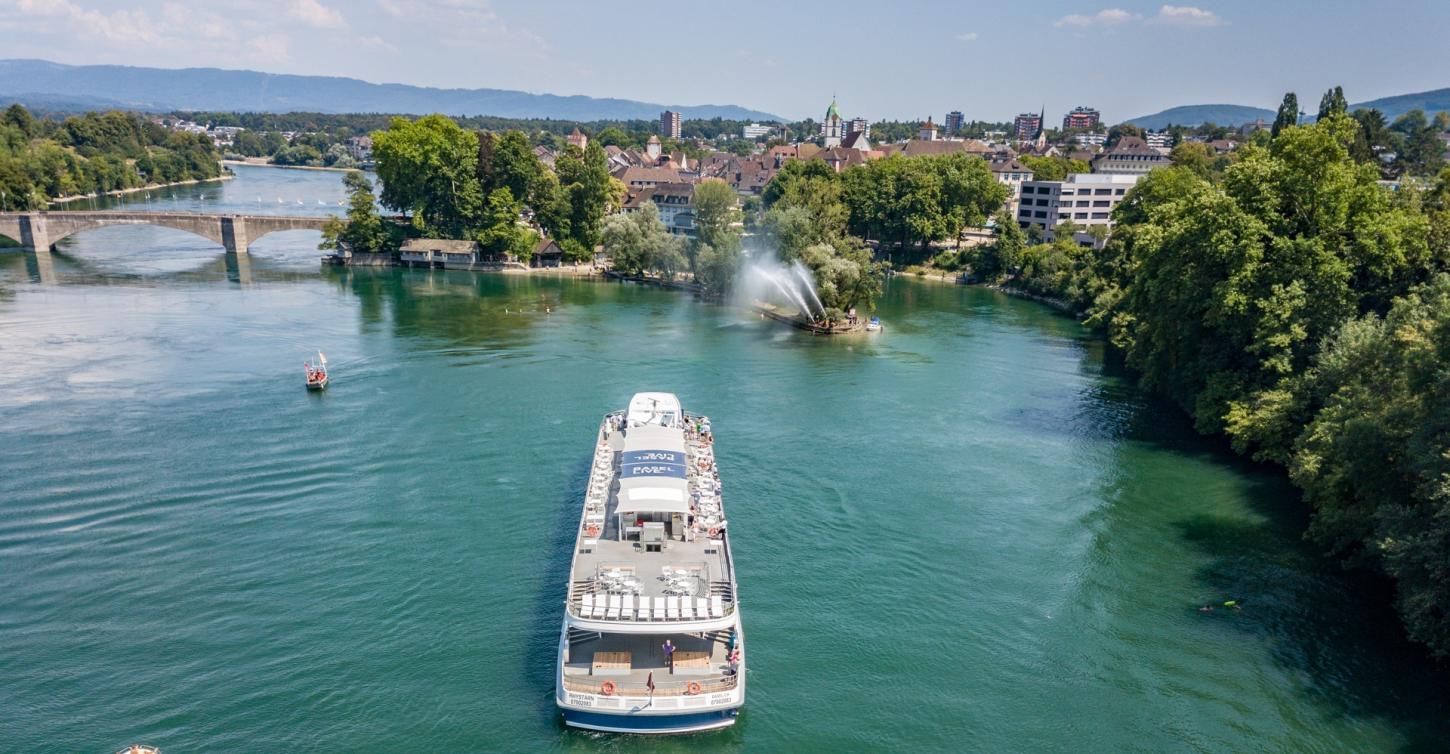
Rheinfelder Stadtführung auf hoher See
- |
- Autumn

There are guided tours of Rheinfelden on a variety of exciting topics and with a variety of vehicles. But what does a city guide do on the boat from Rheinfelden to Kaiseraugst? He is preparing for an innovation, namely a guided tour on the Rhine, by boat.
City guide Edi Steiner talks about his premiere as a ship's companion and what there is to see and marvel at on the Rhine.
As I have had a great love of water and ships since childhood, I set about the preparations with enthusiasm. During a reconnaissance trip, I met a gentleman on the course ship who obviously knew every metre of the trip and who, in ten minutes, gave me a few decisive tips for the later guided tour. He was somewhat shocked at my lack of knowledge on the subject of Rhine navigation. Only afterwards did I find out that I had accidentally met the managing director of Basler Personenschifffahrt AG, Peter Stalder.
Thanks to him, I now also know that "his" ships on the Rhine are on international waters and abide by the same rules as deep-sea shipping.
The Stein, rocky island in the Rhine with history
The two trips on the "Christoph Merian" on the occasion of the autumn market in Rheinfelden began with an explanation of the immediate surroundings: the Stein (Inseli) and its former castle, the Rhine bridge, the St. Annaloch and the house Salmegg. Always amazing is the fact that Rudolf of Habsburg once kept his imperial jewels in this castle in the Rhine. It was the safest place in the Habsburg Empire in the 13th century. Today we admire these treasures in the Hofburg in Vienna behind bulletproof glass.... This castle - together with the Altenburg - was also the nucleus of the later town of Rheinfelden. Unfortunately, it only exists in a few old drawings.

The ship moved comfortably downstream, but the interesting spots on the shore followed each other almost too quickly. Already the uppermost port on the Rhine was gliding by, where mainly bulk goods such as metals, gravel and sand are transhipped onto trucks. Sand for the elephants at Zurich Zoo, for example, or aluminium from Mozambique for the nearby factory.
Augst barrage and its consequences
It is known that before the construction of the barrage in Augst, the Rhine flowed around the Rheinfelder Stein much lower down and with greater velocity, but I had no idea that in the area of Warmbach, the river dropped over a rocky step about three meters high. In pre-1900 times, this step was a dangerous place and feared by shipping and rafters. Today this is no longer even vaguely visible. No wonder, as the water surface has been eight metres higher since the construction of the dam, and at the time it greatly changed the landscape around Augst and Kaiseraugst. The twin Augst - Wyhlen power plant would have become a barrier to ships and fish if the planners had not thought ahead.
Ships use the lock today, so do the fish, but they also have two staircases and a fish lift at their disposal, a facility that fascinates me greatly and which I immediately investigated. Fish in a lift, imagine that!
Competition between transport routes
Shipping on the Rhine already existed in Roman times, and when the Roman roads disintegrated, transport on the river flourished all the more. This trend continued until the High Middle Ages and only changed with the construction of a new road network and even more so with the construction of the first railways in the late 19th century. Nevertheless, the transport of bulk goods by water is still of interest today and several ships a week unload their cargoes in Kaiseraugst and Rheinfelden too. Visitors to the guided tour saw, for example, the Frey AG freighter during the impressive turnaround of the "Christoph Merian".
The Basler Personenschifffahrt AG has had a chequered history, but can look back on a successful period since the company was founded in 1968. The scheduled trips to Rheinfelden are popular and are often combined with guided tours of the town "on dry land". Together with the friendly catering on the ship, this makes for very enjoyable excursions.

Bridges over the Rhine
After the bridges at Augusta Raurica collapsed, travellers had to take long detours for centuries. There was no longer a bridge over the upper Rhine between Strasbourg and Constance. Farmers and businesses were dependent on ferries such as the one at Kaiseraugst. Even before the Basel bridge, the Rheinfeld bridge was built in the 12th century, something the people of Rheinfeld naturally fancied. In 1912 it was replaced by the famous arched bridge and in 2006 it was finally freed from daily bumper-to-bumper traffic when the concrete bridge of the Autobahnspange was opened.
On the way back to the Stein, the boat landing and the end of the tour, there was still the story of the Salmenbräu brewery to tell, where today the Salmenpark with its modern apartments is located.
The circle of stories was completed with a view of the Salmegg house, built as a summer home for the sickly wife of the guest widower and brewer F.J. Dietschy.




One did not want to believe that the 45 minutes were already over.
The boat trip is really comfortable - and the staff does everything to make you feel good as a guest.
Edi Steiner, city guide

